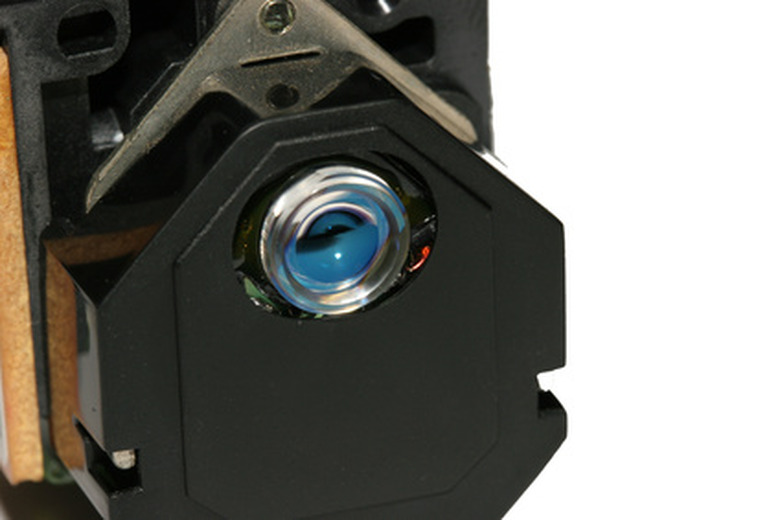How To Make A Hologram Projector
There are two main types of holograms: reflection and transmission. Reflection holograms store the information of a 3D image in a thick photographic emulsion sandwiched between two glass plates and must be viewed with a bright spotlight. Transmission holograms use mirrors and two laser sources, a reference beam and the object beam, to print the hologram on film and can be viewed with the same laser you use to create the image. Each type requires a different projector. Although building a commercial hologram projector is too complex a project to describe in a short article, it is possible to build basic transmission and reflection hologram projectors out of a bright spot light and a laser beam, respectively.
Reflection Hologram Projector
Step 1
Place a bright spot light at the same distance and angle from the hologram plate as when you first exposed the film. You cannot use fluorescent lights, lasers or light from a frosted bulb to view a reflection hologram projector.
Step 2
Switch on the spot light and check the quality of your hologram.
Step 3
Adjust the position of the hologram by moving it from side to side and tilting it until you get the brightest and most focused hologram possible.
Transmission Hologram Projector
Step 1
Place the laser and the hologram plate in the same location you used to expose the hologram. If you are using a different location, place them at the same distance and angle to each other.
Step 2
Switch on the laser. The image you see will be the exact copy of the original, what is called a virtual image.
Step 3
Place the laser head-on from the hologram plate to get a clearer image. The viewing angle with the head-on illuminating will vary slightly, but the quality of the image will improve. This is a good option if you are new to hologram projections.
Things Needed
- Spot light
- Laser beam
- Hologram plate
Cite This Article
MLA
Latham, Andrew. "How To Make A Hologram Projector" sciencing.com, https://www.sciencing.com/make-hologram-projector-7782341/. 24 April 2017.
APA
Latham, Andrew. (2017, April 24). How To Make A Hologram Projector. sciencing.com. Retrieved from https://www.sciencing.com/make-hologram-projector-7782341/
Chicago
Latham, Andrew. How To Make A Hologram Projector last modified March 24, 2022. https://www.sciencing.com/make-hologram-projector-7782341/
